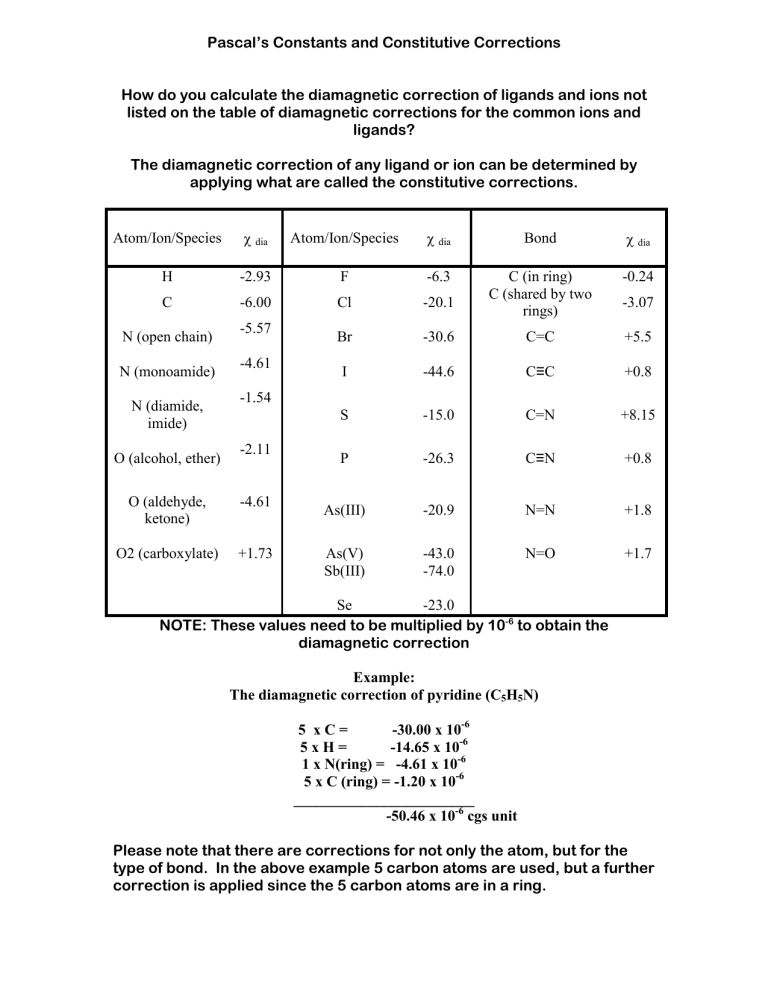
Pascal’s Constants and Constitutive Corrections How do you calculate the diamagnetic correction of ligands and ions not listed on the table of diamagnetic corrections for the common ions and ligands? The diamagnetic correction of any ligand or ion can be determined by applying what are called the constitutive corrections. Atom/Ion/Species χ dia Atom/Ion/Species χ dia Bond χ dia H -2.93 F -6.3 -0.24 C -6.00 Cl -20.1 C (in ring) C (shared by two rings) Br -30.6 C=C +5.5 I -44.6 C≡C +0.8 S -15.0 C=N +8.15 P -26.3 C≡N +0.8 As(III) -20.9 N=N +1.8 As(V) Sb(III) -43.0 -74.0 N=O +1.7 N (open chain) N (monoamide) N (diamide, imide) O (alcohol, ether) -5.57 -4.61 -3.07 -1.54 -2.11 O (aldehyde, ketone) -4.61 O2 (carboxylate) +1.73 Se -23.0 NOTE: These values need to be multiplied by 10-6 to obtain the diamagnetic correction Example: The diamagnetic correction of pyridine (C5H5N) 5 xC= -30.00 x 10-6 5xH= -14.65 x 10-6 1 x N(ring) = -4.61 x 10-6 5 x C (ring) = -1.20 x 10-6 ________________________ -50.46 x 10-6 cgs unit Please note that there are corrections for not only the atom, but for the type of bond. In the above example 5 carbon atoms are used, but a further correction is applied since the 5 carbon atoms are in a ring.
